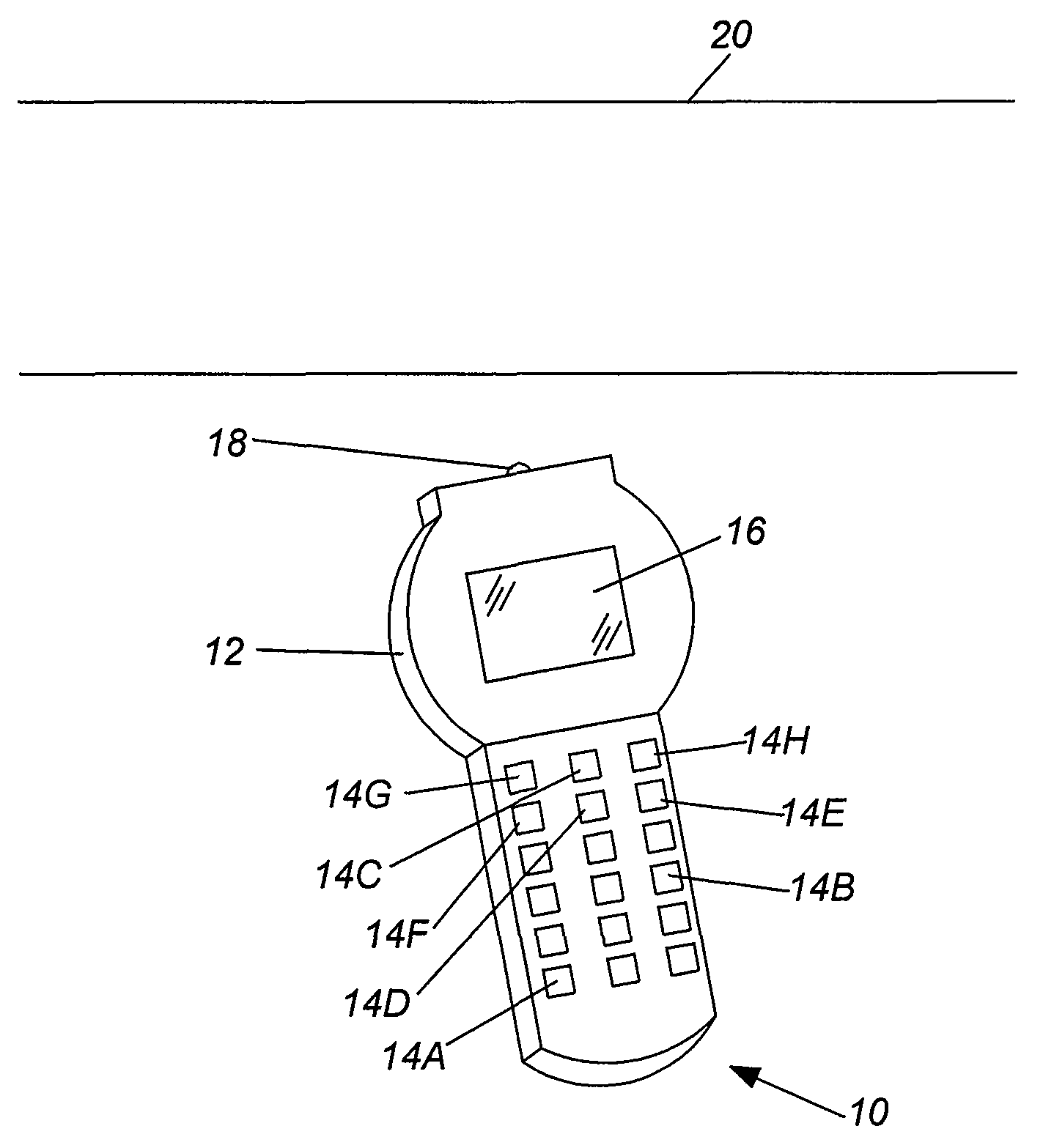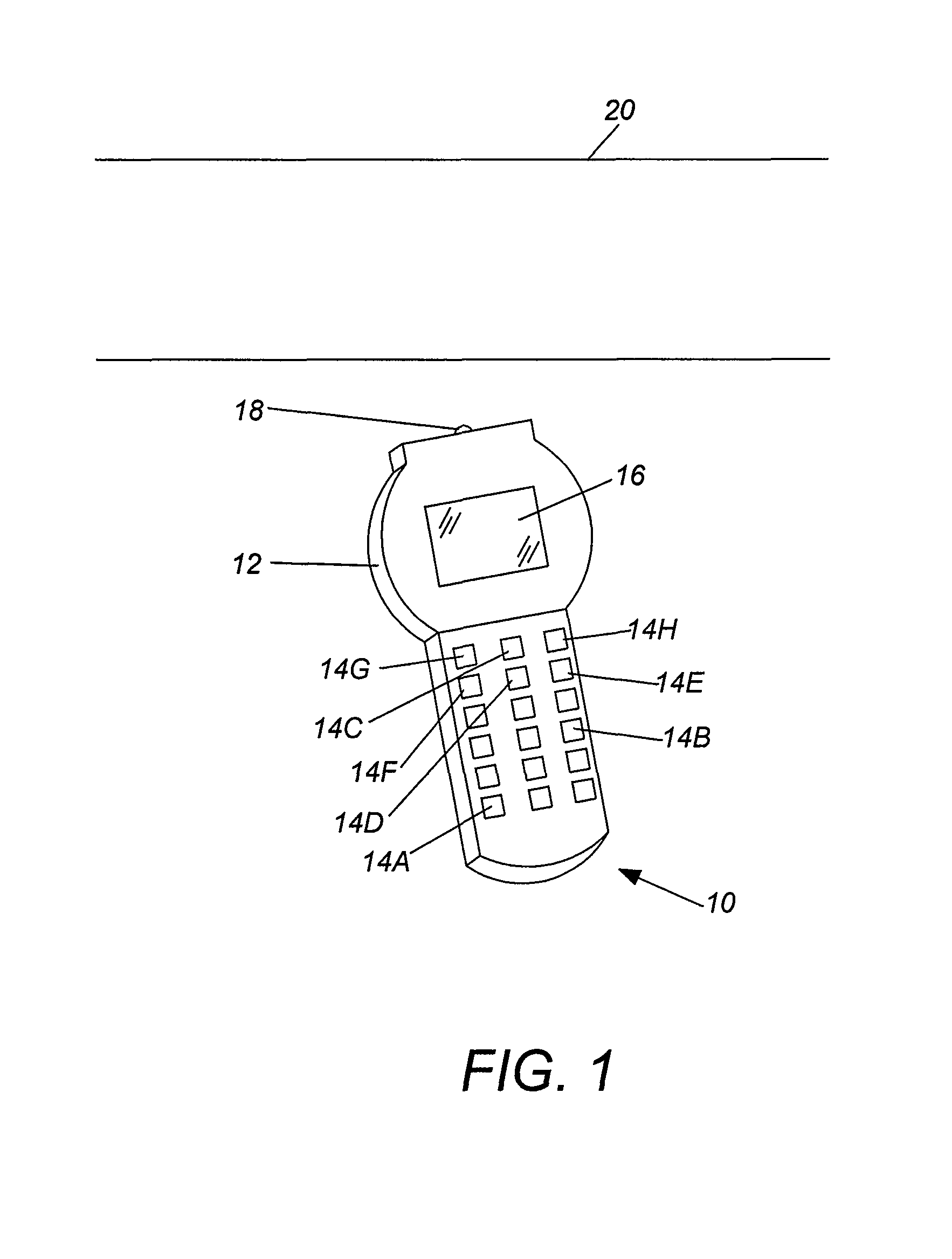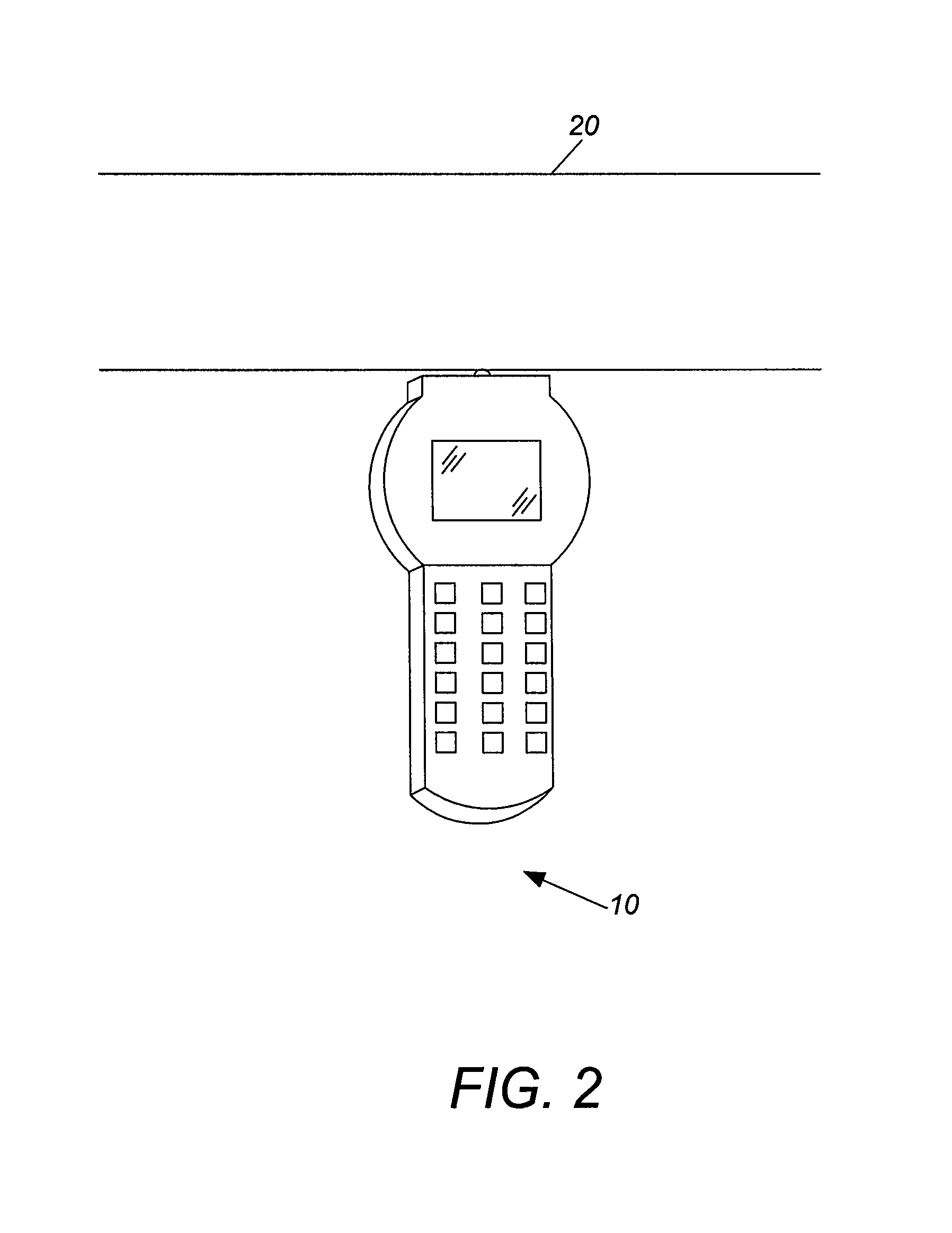Pole integrity meter and method of determining pole integrity
a pole integrity and meter technology, applied in the direction of measuring devices, analysing solids using sonic/ultrasonic/infrasonic waves, instruments, etc., can solve the problems of road closure, laborious replacement of poles, and inconvenient burying of cables underground, so as to reduce costs, prolong the life of existing structures, and minimize risk
- Summary
- Abstract
- Description
- Claims
- Application Information
AI Technical Summary
Benefits of technology
Problems solved by technology
Method used
Image
Examples
Embodiment Construction
[0035]While the present invention is susceptible of embodiment in various forms, there is shown in the drawings and will hereinafter be described a presently preferred, albeit not limiting, embodiment with the understanding that the present disclosure is to be considered an exemplification of the present invention and is not intended to limit the invention to the specific embodiments illustrated.
[0036]Referring to FIG. 1, a pole integrity determining device 10 is shown. The device 10 contains an outer casing 12 which encloses the internal components of the device, including a power source such as a battery, a processor, a data storage device, signal converter devices, and the internal circuitry for performing its intended functions. The external components of the device include one or more command buttons, referred to generally as 14 and a data display unit 16. The command devices could be for example, a power on / off button 14A, buttons that allow the user to input numbers or letter...
PUM
| Property | Measurement | Unit |
|---|---|---|
| circumference/diameter | aaaaa | aaaaa |
| circumference/diameter | aaaaa | aaaaa |
| circumference/diameter | aaaaa | aaaaa |
Abstract
Description
Claims
Application Information
 Login to View More
Login to View More - R&D
- Intellectual Property
- Life Sciences
- Materials
- Tech Scout
- Unparalleled Data Quality
- Higher Quality Content
- 60% Fewer Hallucinations
Browse by: Latest US Patents, China's latest patents, Technical Efficacy Thesaurus, Application Domain, Technology Topic, Popular Technical Reports.
© 2025 PatSnap. All rights reserved.Legal|Privacy policy|Modern Slavery Act Transparency Statement|Sitemap|About US| Contact US: help@patsnap.com



